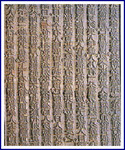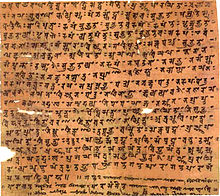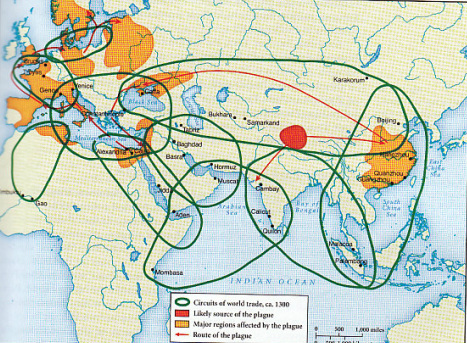3.1.6 By Anna Dengler
Case Study: The Movement of Printing from the East to the West
China

Chinese block printing
The concept of printing originated in china at approximately 50 B.C.E. Originally, the process of printing was still rather gruesome, but increased the speed at which copies of documents could be made immensely. Printing started out with someone writing a character out on a sheet of paper, then pressing it against a wooden block until dried and then removing the paper. The character would then have to be carved out of the block by a skilled craftsman and further used for making duplicated of characters. The Chinese settled on this method for quite some time, until the Sui Dynasty emerged, in which the emperor Sui Yangdi put great emphasis on fixing up China an creating new innovations and improving the ones already created. It can be concluded that through Yangdi’s emphasis on creating new innovations, the Chinese worked on improving their printing as well. Thus, in 593 A.D., the first printing press was created in China.

The Diamond Sutra
Once the Sui Dynasty fell, and the Tang arose, leaders continued to drive the concept of innovation and improvement, leading to the first newspaper in 700 A.D. Though the Chinese have gotten as far as creating printing presses and speeding up their process of printing, they were still using woodblock printing never the less. As this continued on, the Chinese published the first known woodblock printed book, called the Diamond Sutra. It wasn’t until much later in 1041 A.D. in which Pi Sheng invented the first movable type, which tremendously sped up printing and cut out a lot of the agonizing process in doing so. Sheng then exported his innovation into the Western world, leading to more improvement done to this concept of printing by other scholars and craftsmen.
India

Indian Stamp Printing
Though India has used the concept of printing before, the actual woodblock printing did not make its way to India until the Chinese decided to trade the woodblock printing ideas and movable types to India. India started out with around the 7th century; stamps were used in India to print Indian prayers onto clay tablets. The idea of printing in India originated from Buddhism, in which copying and preserving texts was part of their religion. People would have to copy religious texts in order to live by them daily and study them and learn them. Since the process of copying these scriptures by hand was rather agonizing, the Indians developed their own form of printing by using this said stamp system. Not until Chinese traded their woodblock printing methods and movable types was India able to efficiently copy religious or other kinds of text. Since Indians were highly religious and put a high emphasis on having multiple copies of the same text, the easy printing methods provided by the Chinese not only helped Indians speed up printing productions and made them happier by acquiring these texts quicker, but ultimately made it much easier for these religious texts to spread, which contributed to a further spread of Buddhism.
Europe

Gutenberg's Printing Press
In Europe, the idea of printing was not brought upon the people until approximately 1300 AD. As in India, Europeans first and foremost wanted to use the idea of printing for religious purposes, but mainly for images, rather than texts. As paper became more accessible in Europe, people started printing up various things, including playing cards. Once the Shang’s movable type innovation made its way to Europe, and the Europeans became more stable and educated and people started working with the idea of the movable type and expanded on it. Around mid-century 1400s, block-books, woodcut books with both text and images, usually carved in the same block started arising in Europe. This idea turned out to be a much cheaper method compared to Sheng’s movable type. The Europeans kept advancing on the concept of printing, making it faster, cheaper and more reliable for Europe. Around 1450, a German blacksmith named Johannes Gutenberg expanded on the idea of the movable type and created a new printing system for Europe that would lead them to produce up to 240 impressions per hour. From then on, many other printers and craftsmen worked off of Sheng’s and Gutenberg’s printing innovations. Sheng’s idea spread to Europe, enabling Gutenberg to improve the innovation and expand on it. This trade network was needed to take one idea and bring it to another continent in which a skilled laborer, who may not have been able to come up with this idea by themselves, expanded on it and improved it. Both cultures were needed in making this idea which is widely used today in every aspect we see, from social media, to the books we use for education and the vey internet we use today.

